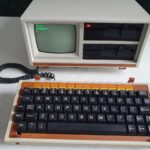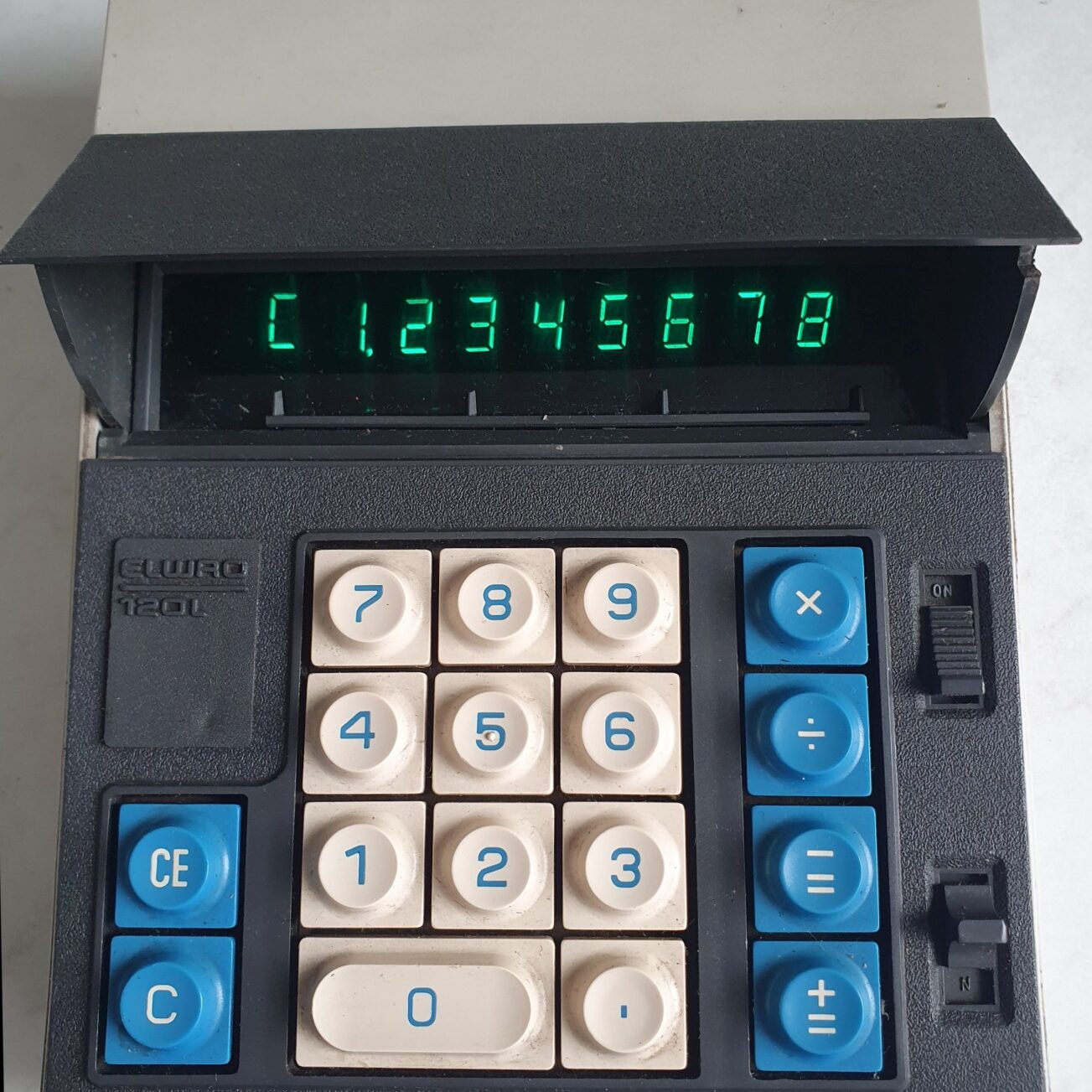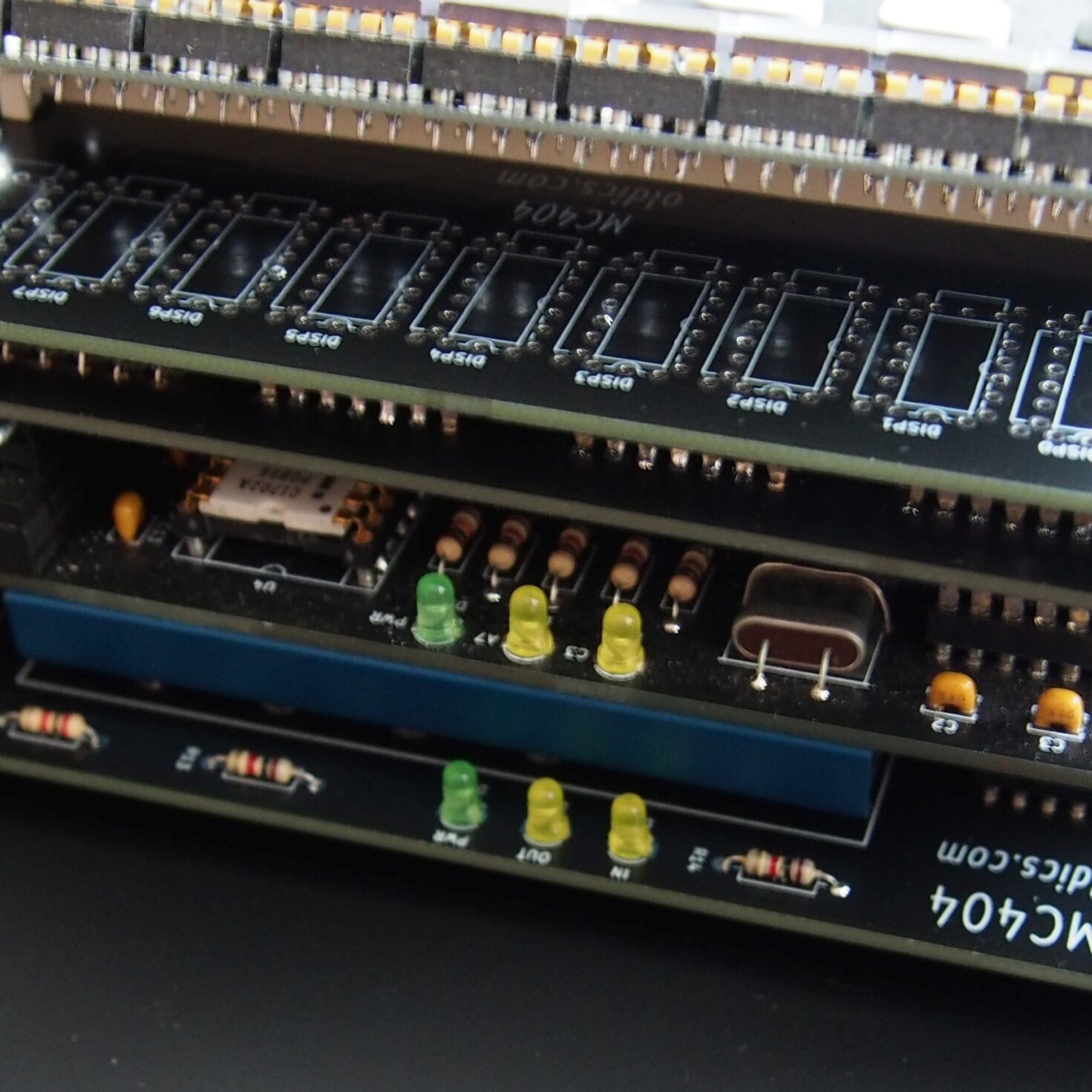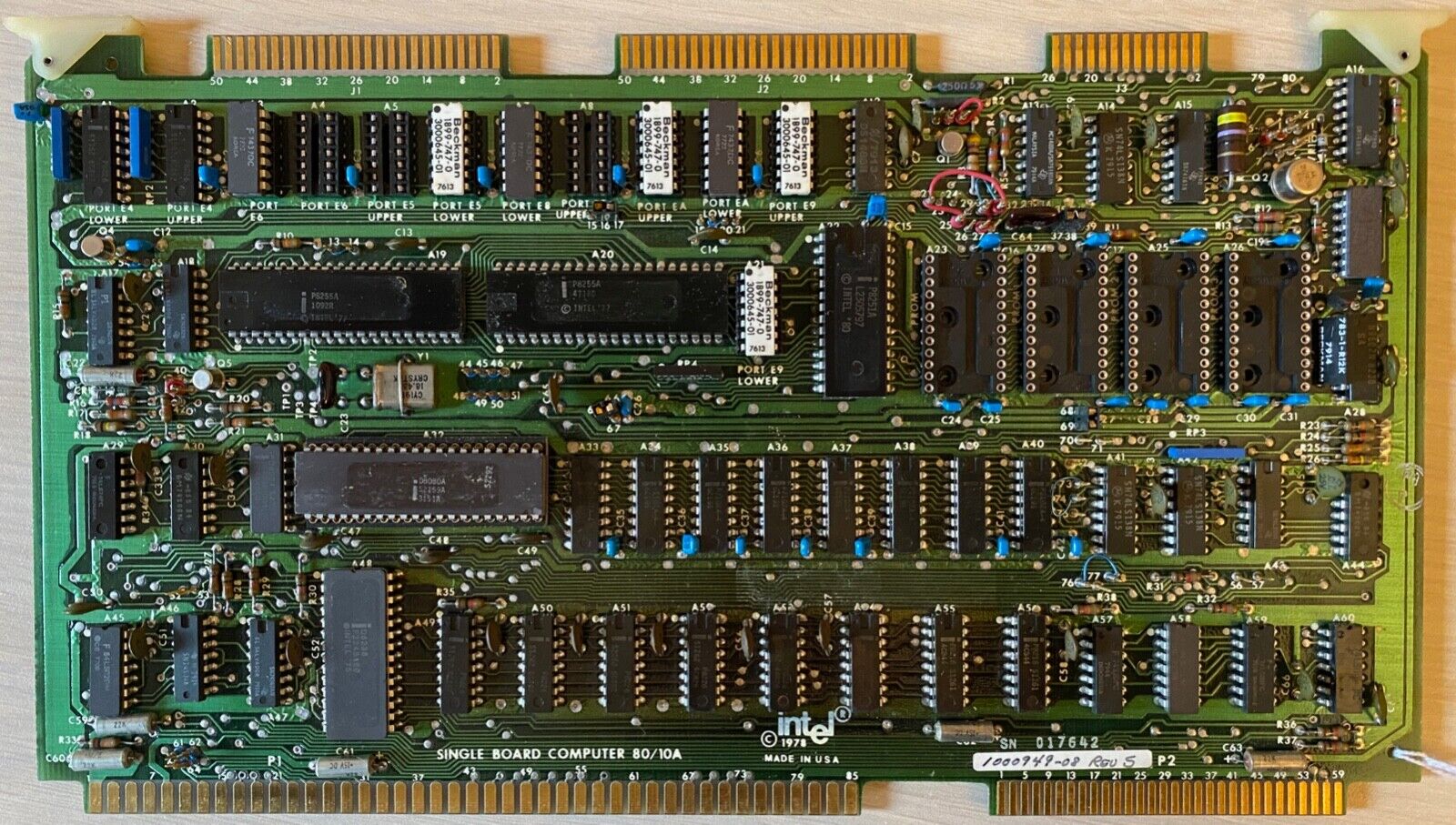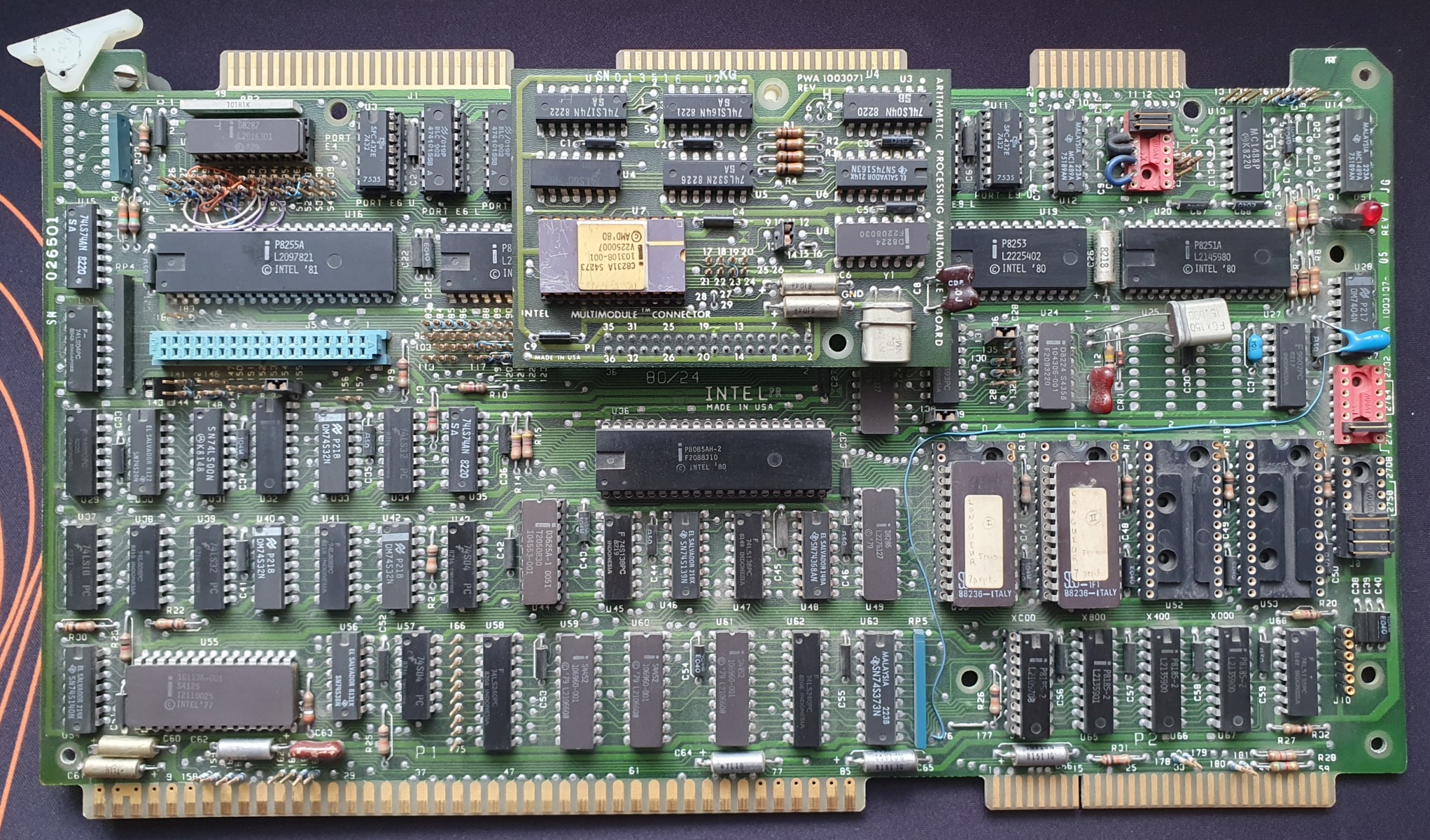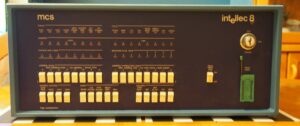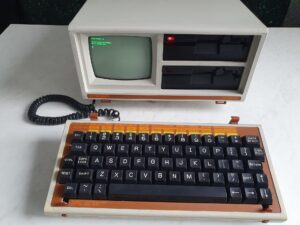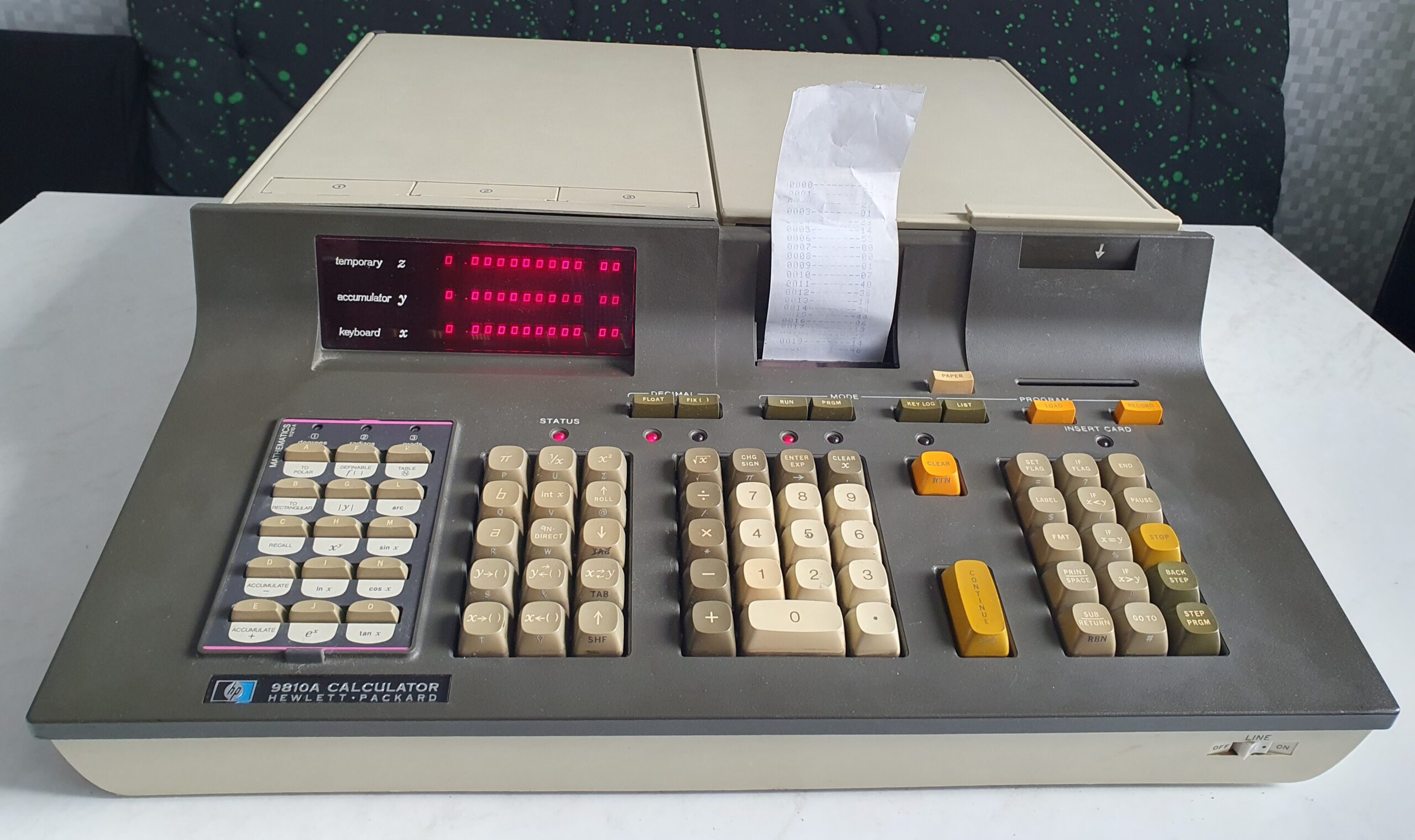- Intel 4004 (Introduced in 1971) stood as the first commercially available microprocessor, condensing essential computing functions onto a single chip and sparking a transformative shift in technology. With its 4-bit architecture, clock speed of 740 kHz, and 2,300 transistors, it ignited the evolution towards increasingly powerful and compact processors. This innovation was a cornerstone in shaping the digital world we inhabit today.
My Collection
Intel Microprocessors


- Intel 4040 (released in 1974) was a successor to the pioneering 4004 microprocessor, featuring enhancements like faster clock speed and improved instruction set capabilities. With its 4-bit architecture and 2,300 transistors, it played a significant role in advancing the integration of computing functions. The Intel 4040 contributed to the ongoing evolution of microprocessor technology, fostering the development of more capable and efficient digital systems.
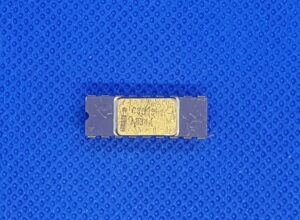
- Intel 8008 microprocessor (debuting in 1972) was a trailblazing advancement, building upon the foundation of the 4004. With an 8-bit architecture and 3,500 transistors, it offered increased processing power and versatility, marking a significant step towards modern computing. The Intel 8008 played a crucial role in paving the way for more complex and capable microprocessors, shaping the future of technology.
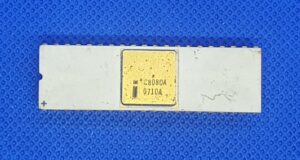
- Intel 8080 microprocessor (unveiled in 1974) expanded upon its predecessors, boasting an 8-bit architecture and around 6,000 transistors. Its higher clock speed and improved instruction set opened doors to enhanced computing capabilities, making it a cornerstone in the progression towards more sophisticated digital systems. The Intel 8080 played a pivotal role in driving the evolution of microprocessors, contributing significantly to the growth of computing technology.

- Intel 8085 microprocessor (launched in 1976) built upon the legacy of its predecessors with an 8-bit architecture and approximately 6,500 transistors. With enhanced clock speed and improved functionality, it further propelled the development of computing capabilities. The Intel 8085 played a vital role in advancing microprocessor technology, contributing to the continued evolution of computing and digital innovation.

- Intel 8086 microprocessor (debuted in 1978) marked a significant leap forward with its 16-bit architecture and around 29,000 transistors. Its innovative design and higher processing power laid the groundwork for modern computing, shaping the x86 architecture that continues to influence processors today. The Intel 8086 was a pivotal advancement that accelerated the evolution of computing technology, paving the way for more powerful and versatile systems.

- Intel 3000 family have been designed to interconnect directly, minimizing the need for ancillary circuitry. It was available in commercial and military temperature range versions. In addition to the components, Intel has also developed a comprehensive support system to assist the user in writing microprograms, debugging hardware and microcode, and programming PROMs for both prototype and production systems.

- Intel 8048 (released in 1976) was a significant microcontroller that integrated computing functions onto a single chip. With an 8-bit architecture, on-chip memory, and I/O ports, it became a staple in various embedded systems, enabling efficient control and automation. The Intel 8048’s compact design and versatility played a crucial role in shaping the field of microcontrollers and their applications across industries.

- Intel 8051 (introduced in 1980) stands as one of the most influential microcontrollers in history. Its 8-bit architecture, on-chip RAM, ROM, and versatile I/O ports made it a cornerstone in embedded systems development. The 8051’s widespread adoption, extensive software support, and robust capabilities have left an enduring impact, shaping the landscape of embedded computing and inspiring generations of engineers and innovators.
INTEL Multibus
- The SBC 80/l0A is the member of Intel’s complete line of OEM computer systems which take full advantage of Intel’s LSI technology to provide economical, self-contained computer based solutions for OEM applications. The SBC 80/l0A is a complete computer systems, each on a single 6.75-by-12 inch printed circuit card.
- The Intel® iSBC 80/24 Single Board Computer is a member of Intel’s complete line of OEM microcomputer systems which take full advantage of Intel’s LSI technology to provide economical, self-contained computer-based solutions for OEM applications. The iSBC 80/24 board is a complete computer system on a single 6.75 x 12.00-inch printed circuit card.
- The Intel iSBC 215 Generic Winchester Disk Controller Board allows as many as four hard-disk drives (typically. Winchester technology). as many as four flexible-diskette drives. and as many as four magnetic cartridge-tape drives to be interfaced to any Intel MULTIBUS interface compatible computer system.
- The iSBC 214 multi-peripheral controller provides MUL TIBUS systems (8-bit and 16-bit data paths) with an interface for Winchester disk drives, flexible diskette drives, and streaming tape drives. A maximum of ten peripheral devices can interface with one board in the following configuration: two 5.25-inch Winchester disk drives, four 5.25-inch flexible diskette drives, and streaming tape drives.
Intel Development Systems
- The INTELLEC 8/MOD 8 is a low-cost computer system, designed to simplify the development of microcomputer systems which employ Intel 8008 CPU chip processors.The INTELLEC 8/MOD 8 has its own power supply, cabinet, display and control panel, memory modules and an Input/Output Module which contains four 8-bit input ports and four 8-bit output ports as well as provision for serial communications interface and a PROM Programmer.
Otrona Systems, Inc.
- The Otrona Attache, introduced in 1982, was a vintage portable computer that utilized a special 8086 module to run DOS version 2.11 in addition to CP/M 2.2. The Otrona Attache offered dual operating system compatibility, allowing users to choose between CP/M 2.2, a widely used system in the early 1980s, and DOS version 2.11.
Hewlett-Packard
- The vintage HP 9810A calculator is a classic example of early programmable calculators developed by Hewlett-Packard in the early 1970s, featuring magnetic card storage and a versatile programming language, offering advanced computational capabilities for its time, and remaining a sought-after collector’s item among enthusiasts of vintage computing equipment.
CompuCorp
- The Compucorp 326 is the highest model in the Compucorp 300 series, offering the most advanced features among its counterparts. It played a significant role in the evolution of portable computing, demonstrating that complex calculations could be performed by compact devices.
- The Compucorp 324G is a vintage calculator from the early 1970s, produced by Compucorp, a company known for its advanced electronic calculators.
ELWRO The Wroclaw Electronic Works
- The ELWRO 120L boasted a straightforward yet robust design, featuring the essential four arithmetic functions: addition, subtraction, multiplication, and division. Its simplicity in design belied its capability to perform basic mathematical calculations efficiently, catering to various computational needs.
Other calculators
- The DEV-TRON SI-36 calculator was based on a two-chip set of LSI (Large Scale Integration) chips from MOS Technology. Each of the chips is housed in a ceramic package with 28 pins. It’s possible, though unconfirmed, that MOS Technology was the first manufacturer of integrated circuits to pack the logic of a fully functional scientific calculator into just two chips.




